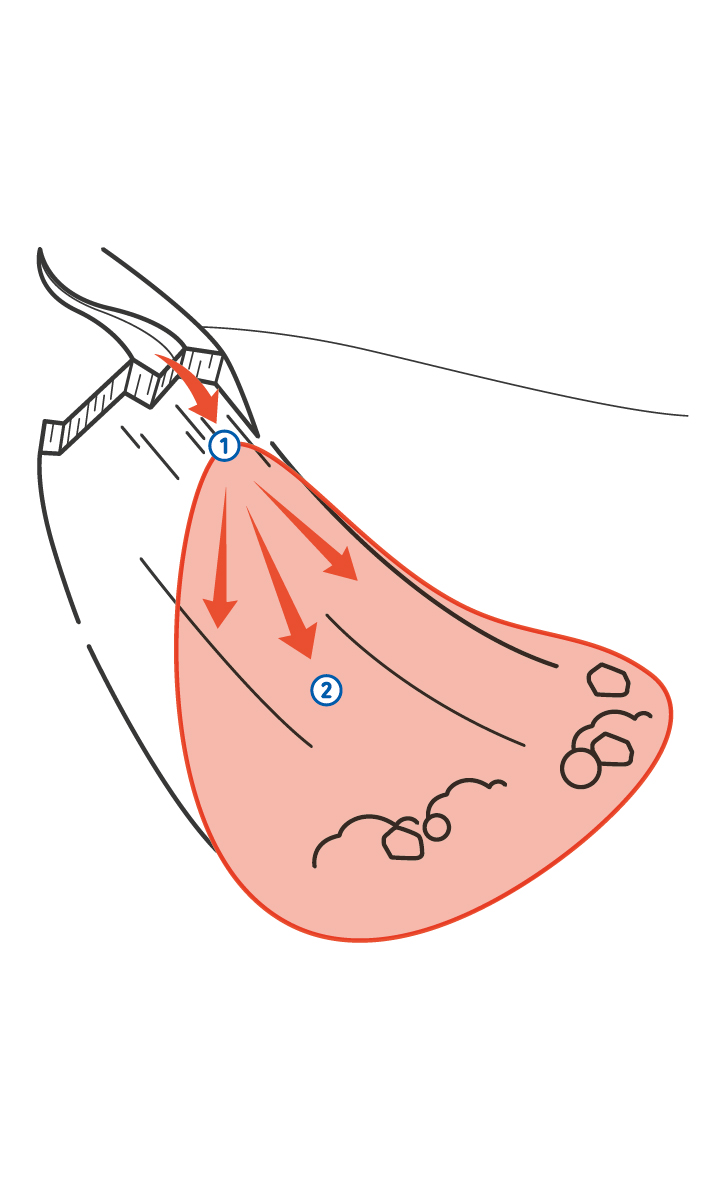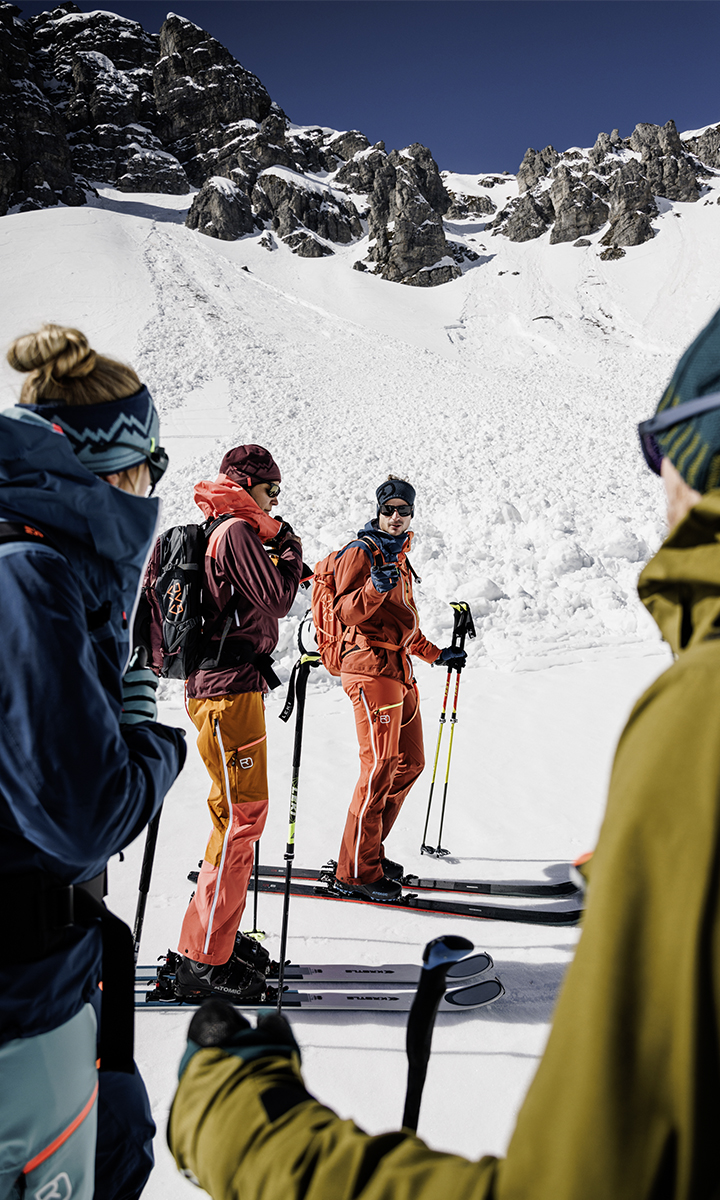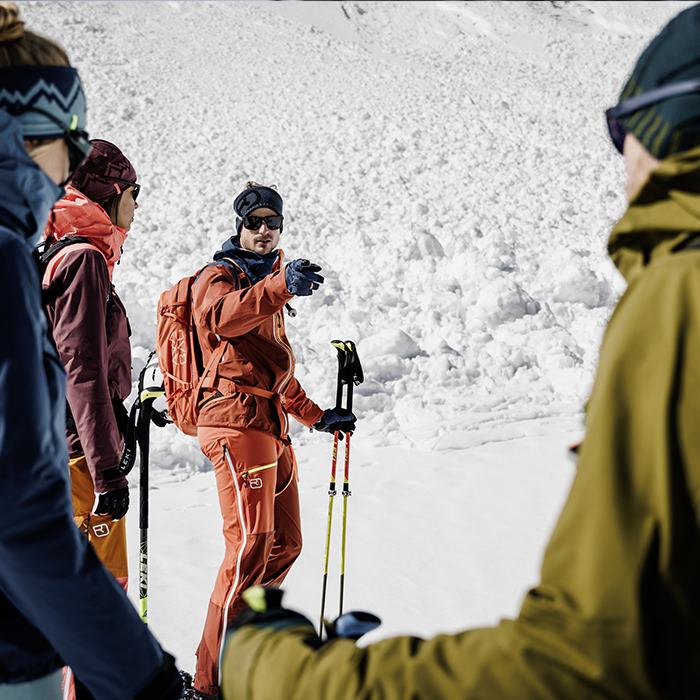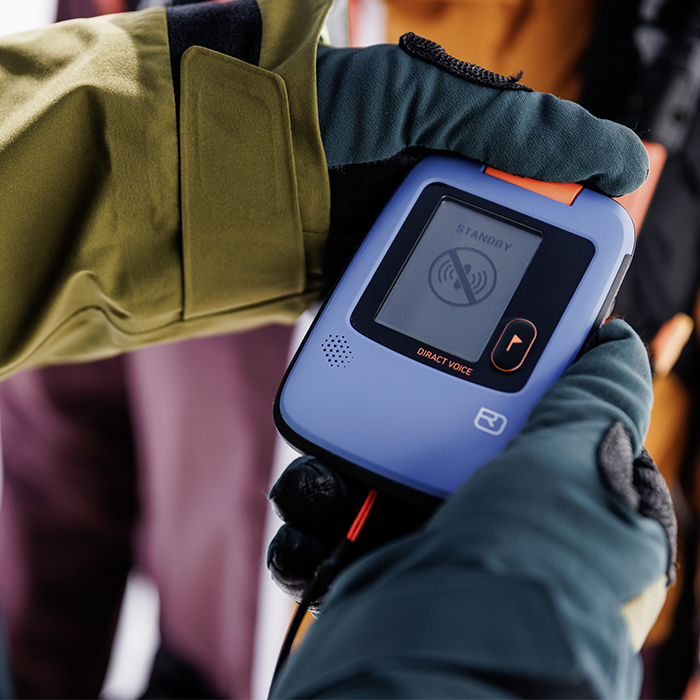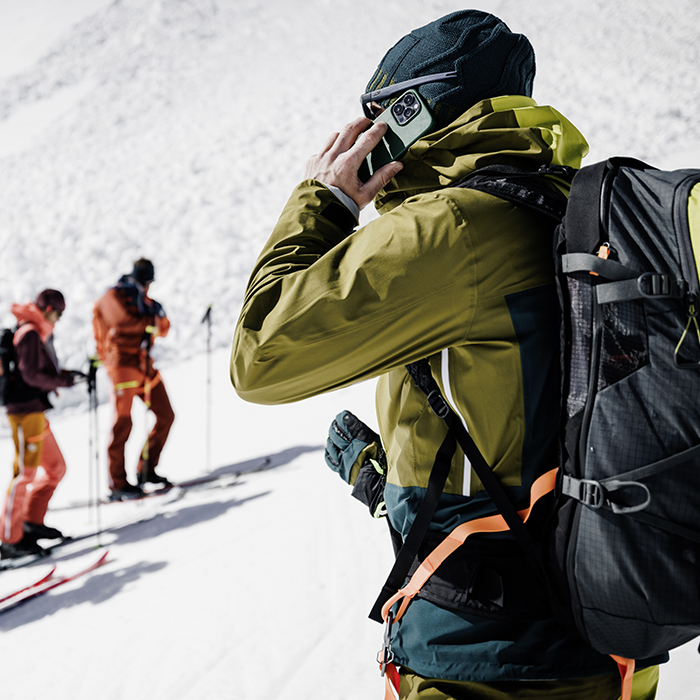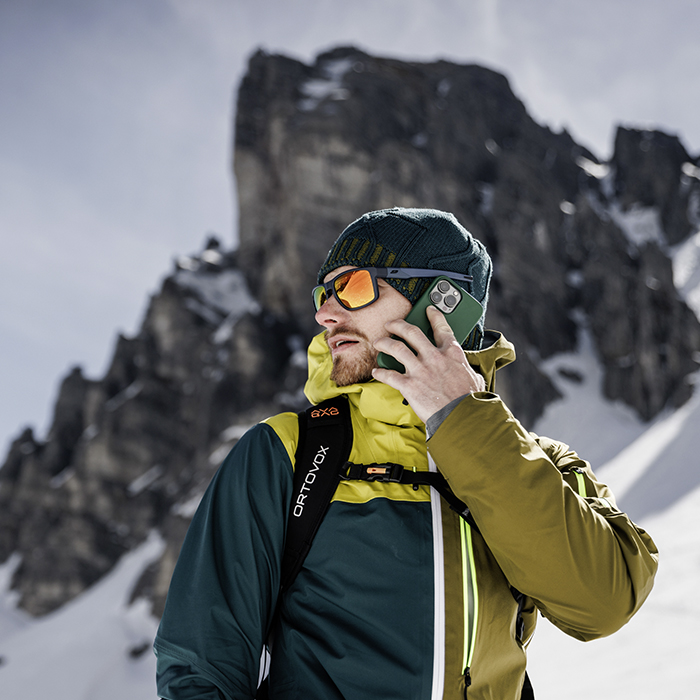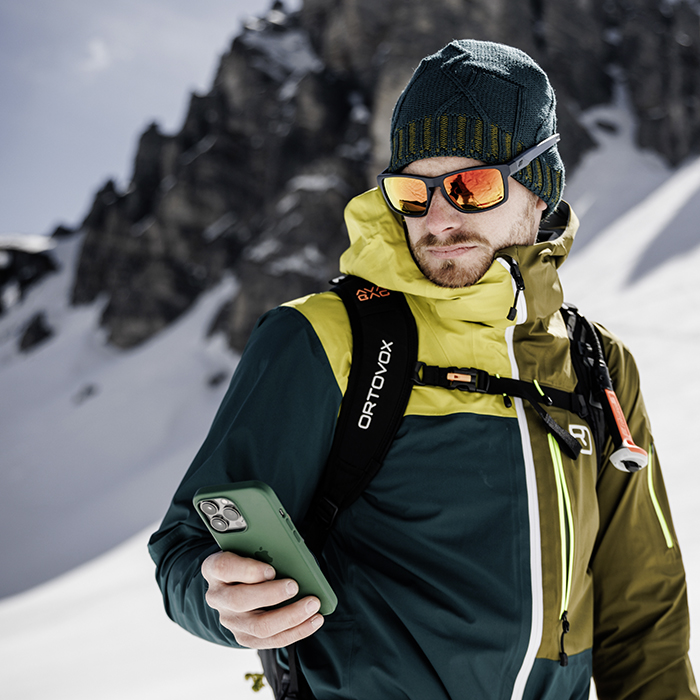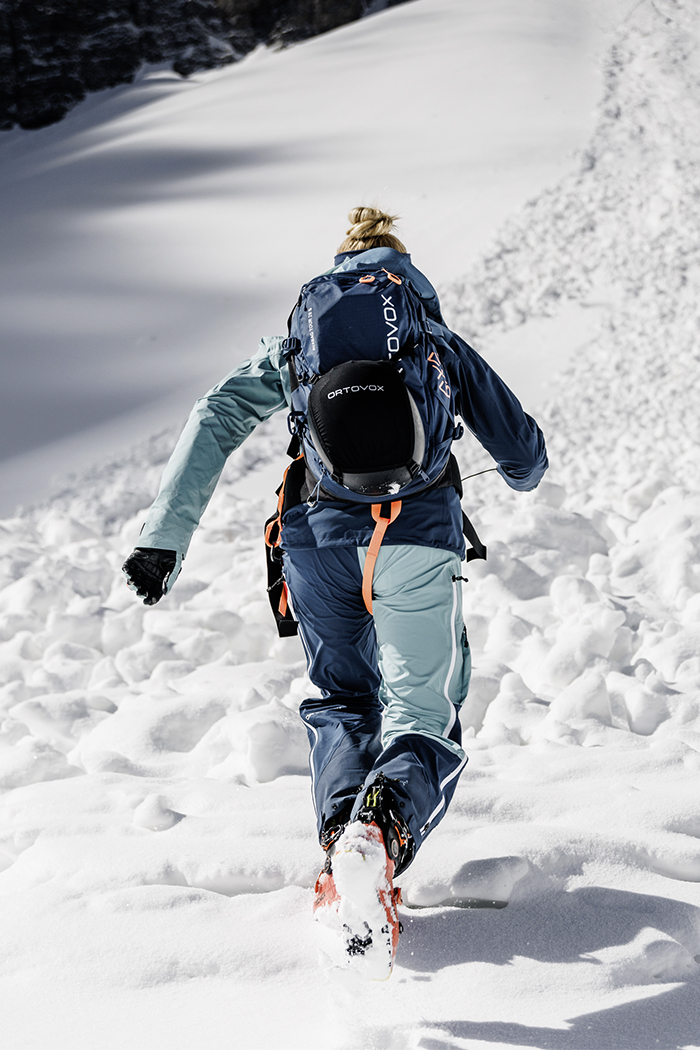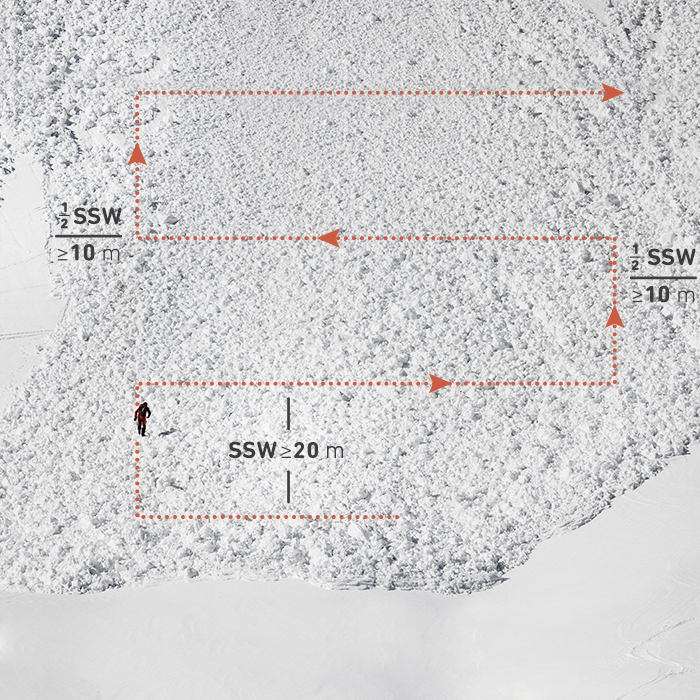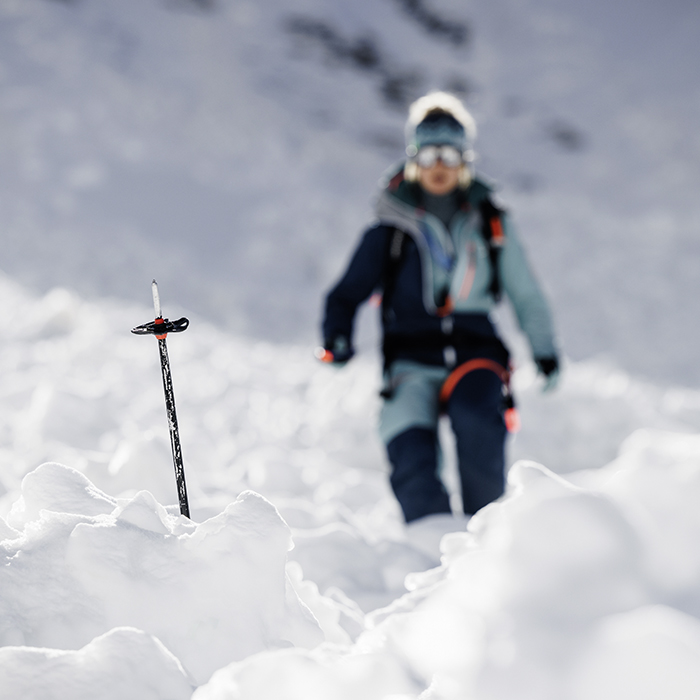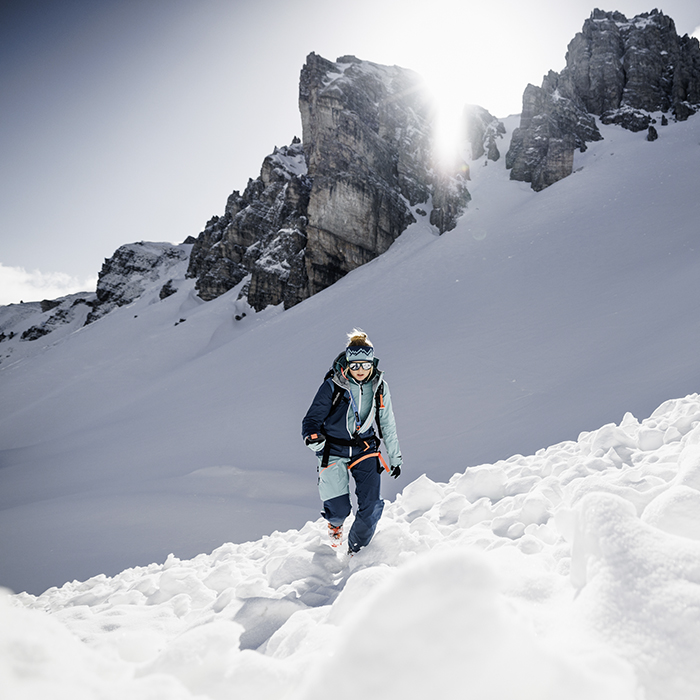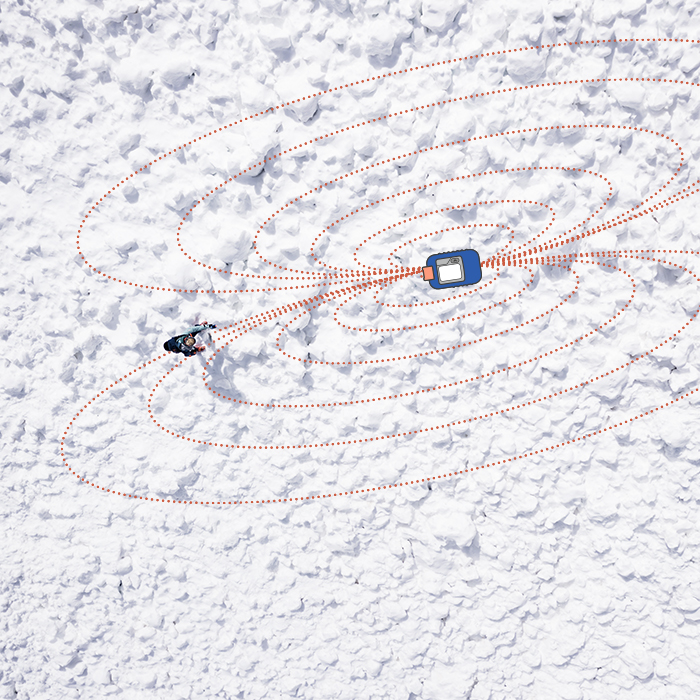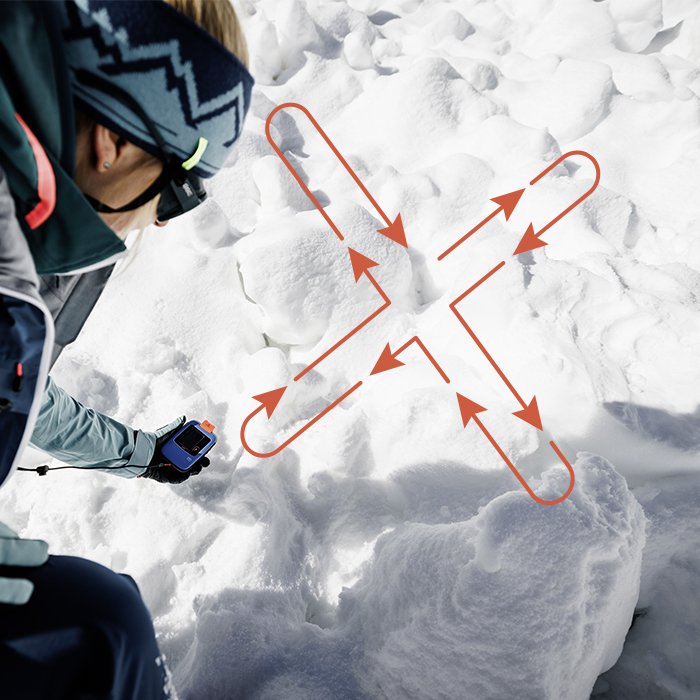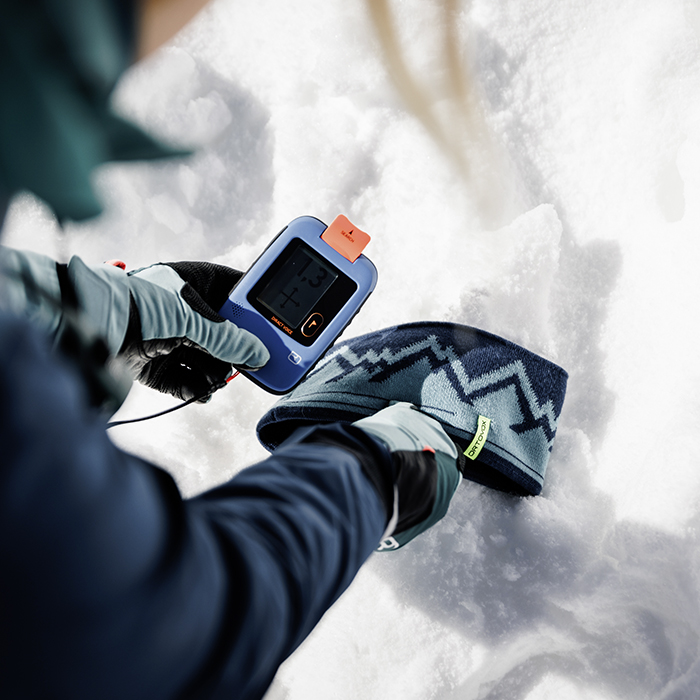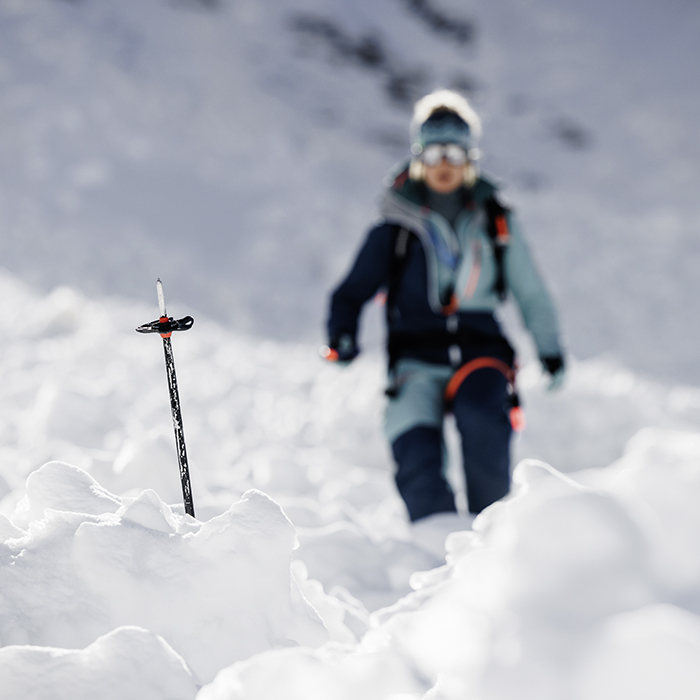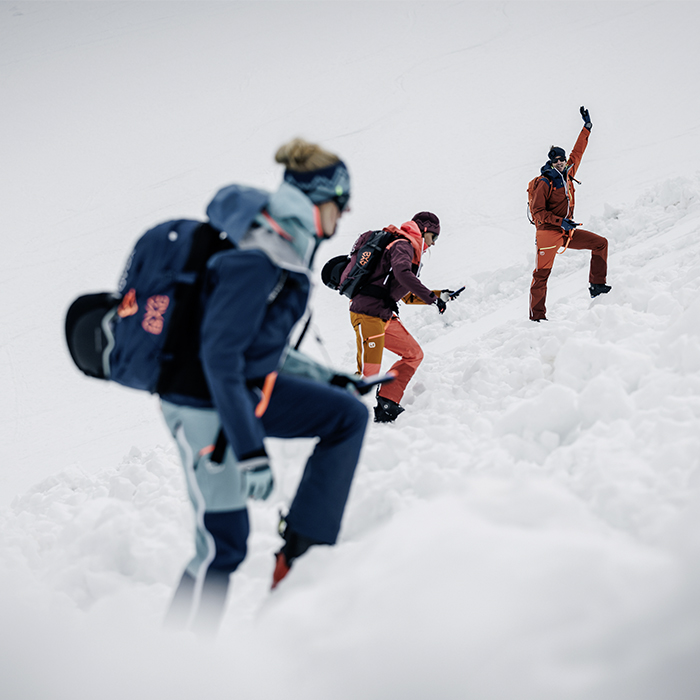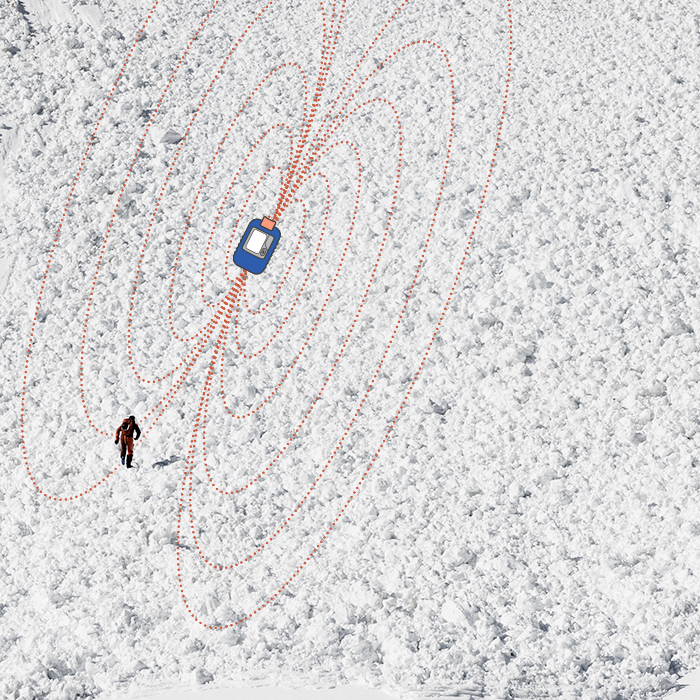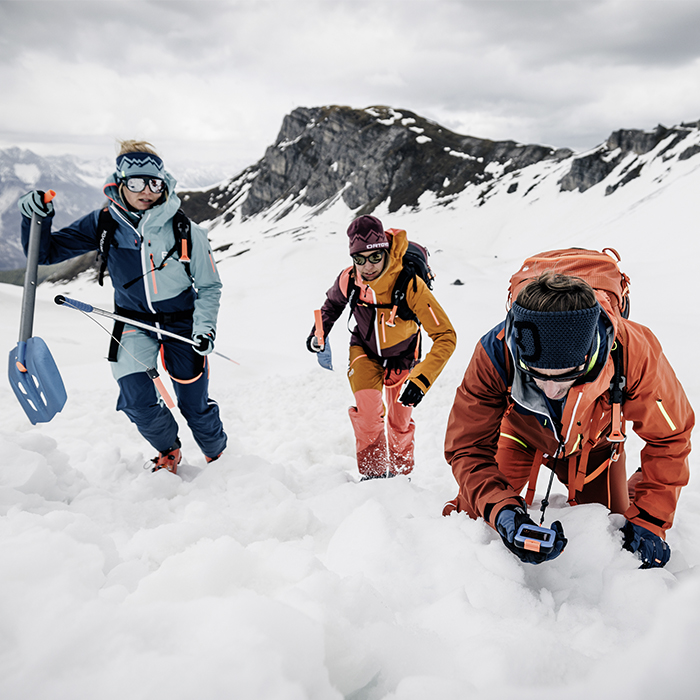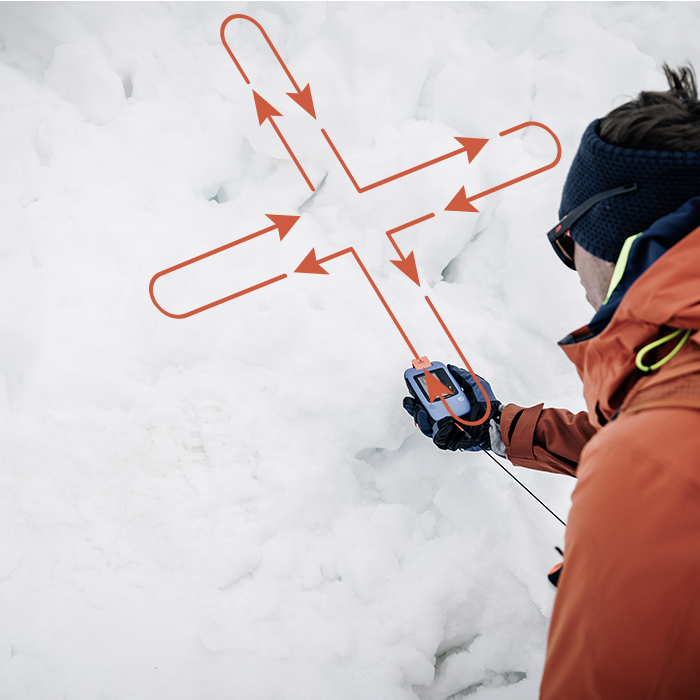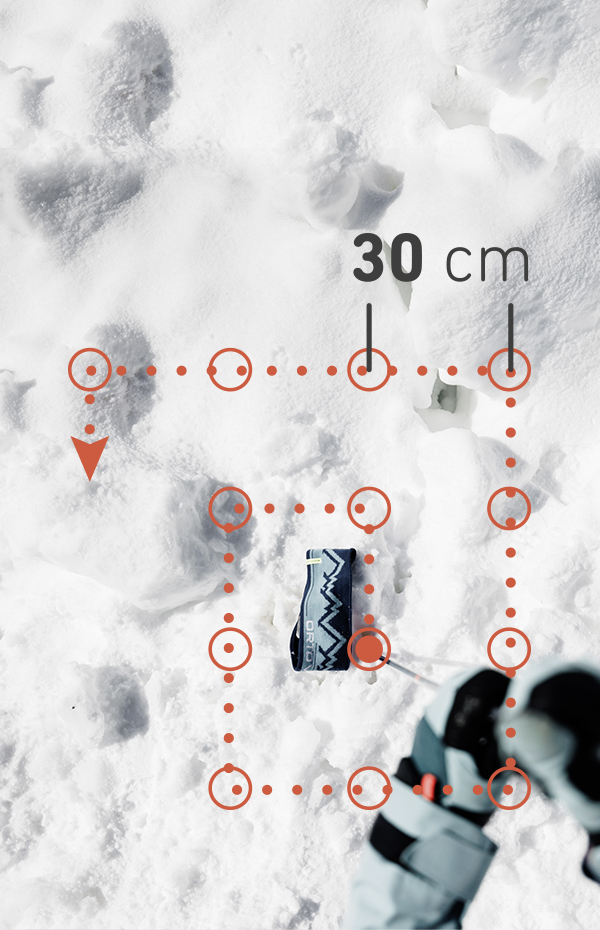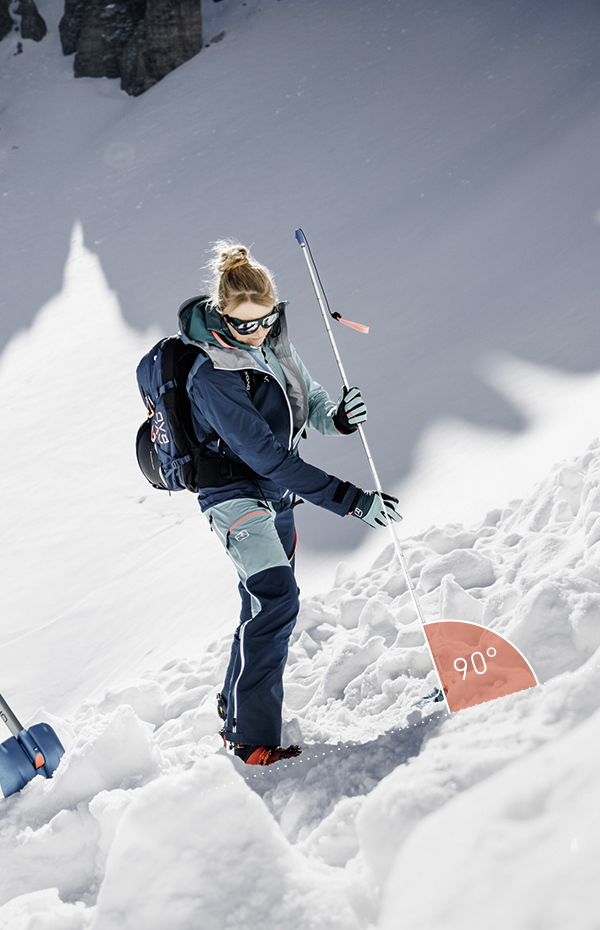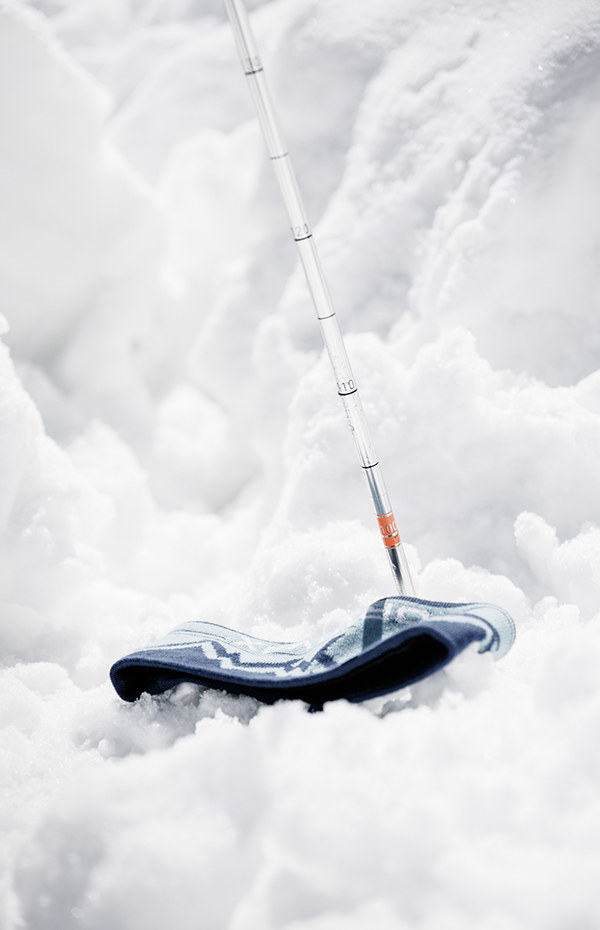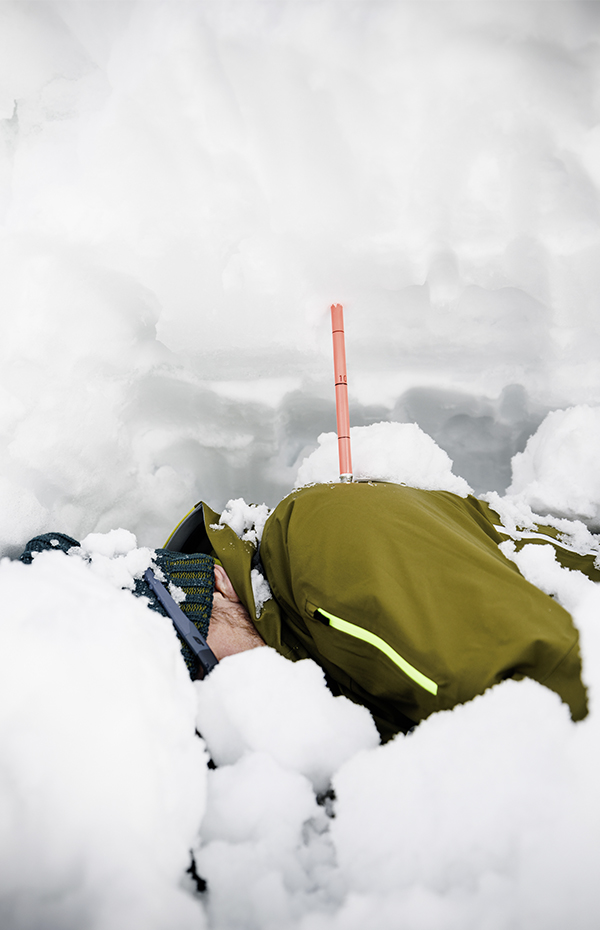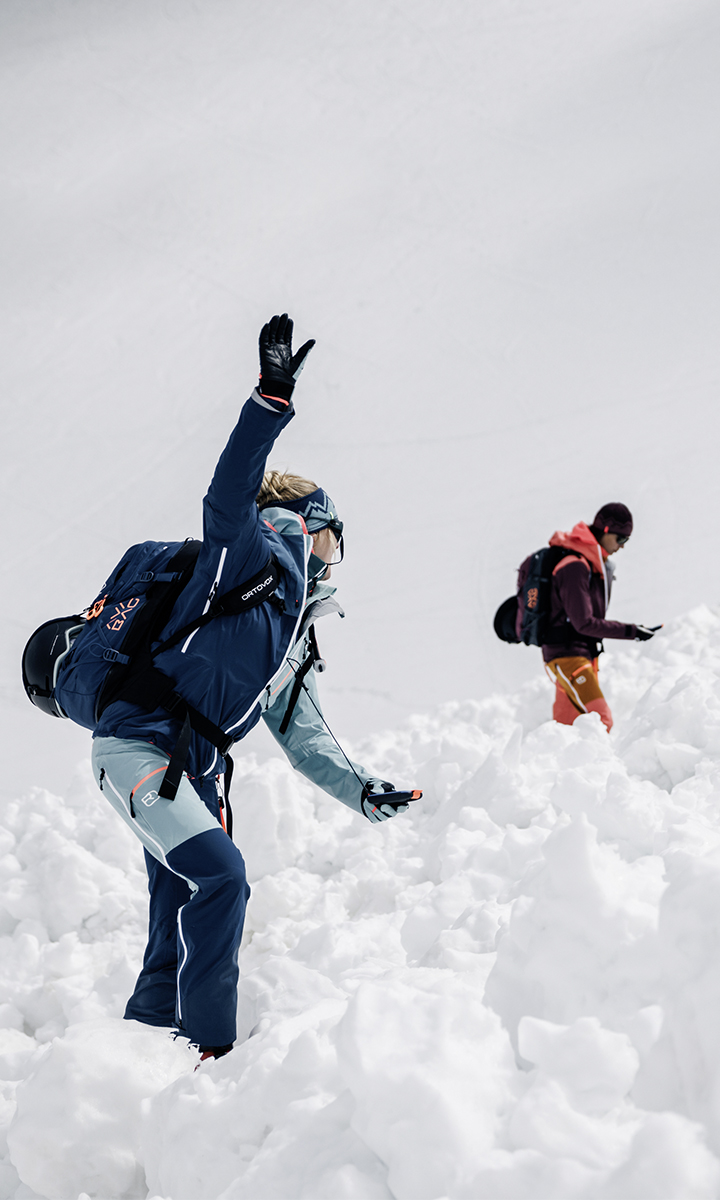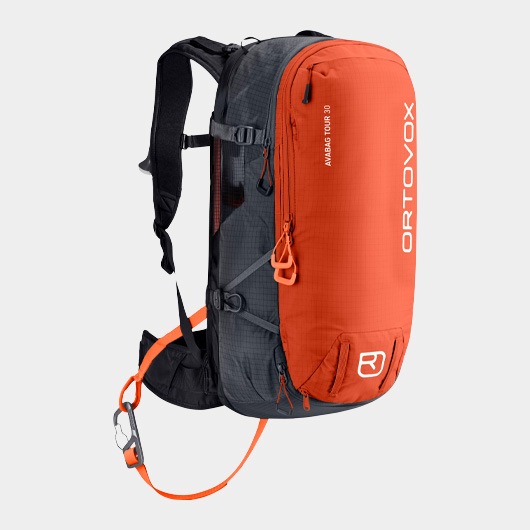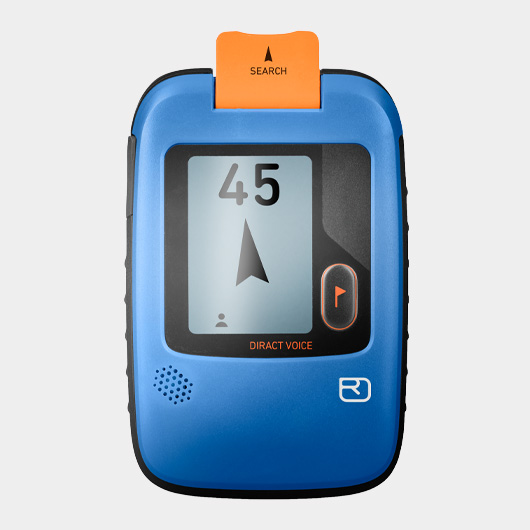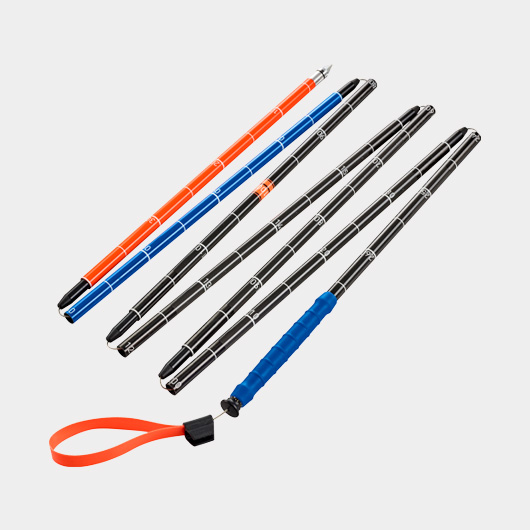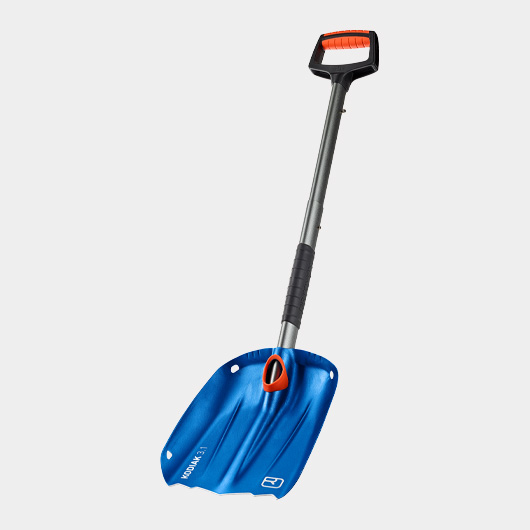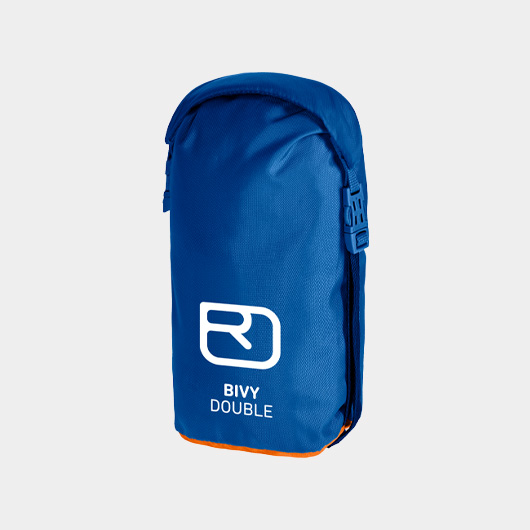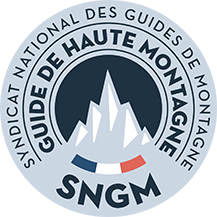SAVING TIME SAVES LIVES
The survival curve shows that most burial victims are alive once the avalanche comes to a stop. This survival curve drops rapidly after 15 to 18 minutes. This is why it is so important that the search for avalanche burial victims goes smoothly and quickly. And that is exactly why practice is so essential. (Source: Brugger et al.)
COORDINATING THE COMPANION RESCUE
As a rule, the most experienced person should coordinate the rescue and make the emergency call. However, in individual cases someone else can be appointed to call the search and rescue service.
AVALANCHE SEARCH PROCEDURE
When it comes to speed and precision, the procedure used when searching for avalanche burial victims can be compared to the “airport approach”.
The closer an airplane gets to the airfield, the slower it flies, so that it can descend just before landing, land on the runway and come to a stop. (Source: mountainsafety.info)
VIDEO
SEARCHING FOR BURIAL VICTIMS USING AN AVALANCHE TRANSCEIVER
COMPANION RESCUE WITH ONE SEARCHER
If the rescuer is alone in the avalanche deposit zone, or if they are the only person experienced in avalanche transceiver search, they must conduct the entire search and, if necessary, the probing to pinpoint the location, then do the shoveling on their own.
COMPANION SEARCH WITH SEVERAL SEARCHERS
If the avalanche deposit zone is very large or there are several burial victims and enough rescuers are available, the deposit zone should be searched by several people. Here, the coordinator has the important job of maintaining an overview of which areas of the deposit zone have already been searched and which have yet to be searched.
CORRECT PROBING
To ensure probing runs as smoothly and efficiently as possible, you need to work systematically. The suspected burial location is searched in a grid formation with intervals of approx. 30 centimeters (approx. the length of a boot). A “chessboard grid” has proven to be the most effective. This can then be worked through crosswise or in the form of a spiral.
VIDEO
THE CORRECT WAY TO PROBE AFTER AN AVALANCHE
PROBING
SYSTEMATIC PINPOINTING
Probing saves you valuable shoveling time. If you get a “hit” with the avalanche probe – i.e. you hit an object in the snow – you can read the exact burial depth on the probe and work precisely toward the burial victim. If you were to start digging toward the suspected burial location immediately after the avalanche transceiver search, i.e. without probing, you would have to move twice as much snow.
VIDEO
THE CORRECT WAY TO SHOVEL AFTER AN AVALANCHE
SHOVELING
THE MOST TIME-CONSUMING PART OF THE RESCUE
Of all of the phases in a rescue, shoveling generally takes the most time. While a well-practices avalanche transceiver search will have determined the burial location within approx. two to three minutes and there’ll be a probe hit within another 30 seconds to a minute, you often need four to five minutes to free the burial victim. When doing so, it is important to get to their head as quickly as possible.
SHOVELING STRATEGIES
The more helpers there are to shovel, the more quickly you will reach the burial victim. The V-system has established itself as the best strategy (with three people shoveling): In this system, two people stand parallel to one another at the front, while a third person stands behind them to clear away the snow they dig out. The aim is to create a wide access ramp to the burial victim and dig toward their head as quickly as possible.
SHOVELING ALONE
If you have to shovel alone, you need to have a good shovel and be in good physical condition. When digging alone, you again start digging from a distance of one and half times the burial depth downhill from the probe, and work toward the burial victim by creating a type of ramp. If the avalanche snow is harder, you should first dig out blocks of snow and then clear these away behind you to the side. The last segment of the probe (ideally marked in a color) indicates when you need to start working more carefully to avoid injuring the burial victim with the shovel blade. When you are directly next to the burial victim, the best thing to do is use your hands to free them.
The most effective method is for three people to shovel in a V-formation. While two people work toward the burial victim at the front, the third person is positioned behind to clear away the snow. If one of the shovelers at the front gets tired, they should switch places; or you should rotate positions every 60 seconds.
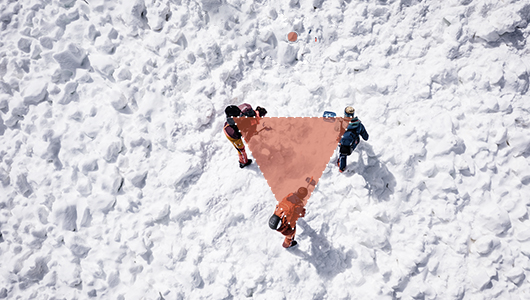
The last segment of the probe (ideally marked in a color) indicates when you need to start working more carefully to avoid injuring the burial victim with the shovel blade. When you are directly next to the burial victim, the best thing to do is use your hands to free them.
TWO PEOPLE SHOVELING
If there are two of you, you begin shoveling in parallel next to one another and work toward the burial victim the same way you would if you were alone. As two of you can clear a wider ramp, you will get to the head more quickly. The last segment of the probe (ideally marked in a color) indicates when you need to start working more carefully to avoid injuring the burial victim with the shovel blade. When you are directly next to the burial victim, the best thing to do is use your hands to free them.
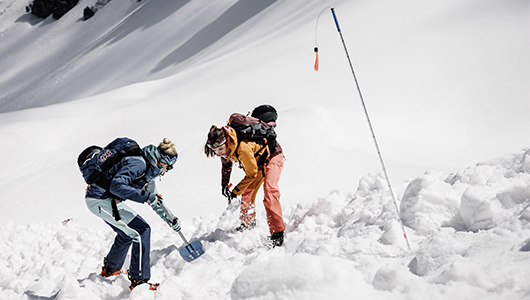
If there are four of you, two people shovel in parallel at the front and two in parallel at the back. Here again, the front and back shovelers should switch places every 60 seconds. If the shovels used for clearing have been set to their clearing function, these should be left in place and only the people switch places. The last segment of the probe (ideally marked in a color) indicates when you need to start working more carefully to avoid injuring the burial victim with the shovel blade. When you are directly next to the burial victim, the best thing to do is use your hands to free them.
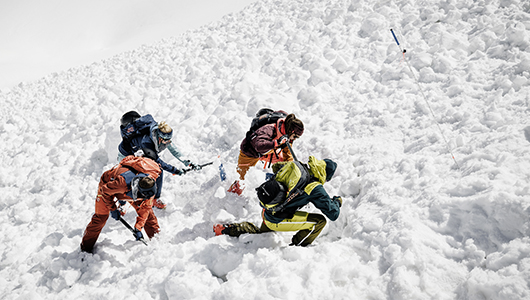
15% RABATT SICHERN
Theorie auffrischen - für die Praxis ausstatten: mit dem Code LAB-SNOW-15
BESTENS VORBEREITET SEIN - mit dem Code LAB-SNOW-15 *
DU HAST DEIN WISSEN FÜR DEINE KOMMENDEN SKITOUREN UND FREERIDE-TURNS AUFGEFRISCHT, ABER DIR FEHLT NOCH DIE PASSENDE AUSSTATTUNG DAFÜR? ALS TREUES MITGLIED UNSERER SAFETY-COMMUNITY BIETEN WIR DIR EXKLUSIV 15% RABATT AUF DEINEN NÄCHSTEN EINKAUF AUF ORTOVOX.COM.
*Bis 15.04.2026 kannst du damit reduziert auf das gesamte Sortiment zugreifen – einfach den Code im Warenkorb hinterlegen, und vom Rabatt profitieren. Die Aktion gilt nur einmalig und ist nicht mit anderen Gutschein-Aktionen kombinierbar.
ENTDECKE UNSERE PRODUKTAUSWAHL
